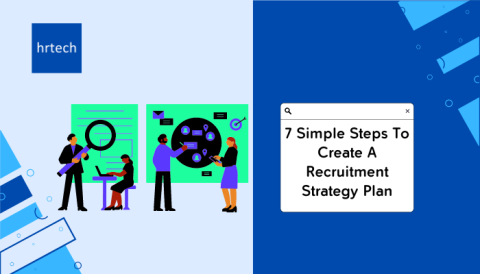Recruitment in 2025 isn’t just limited to finding talent but finding it fast, fairly, and with precision. Yet many businesses still rely on outdated tools that slow down hiring and frustrate candidates. Modern recruiting systems are transforming the way HR teams attract, evaluate, and onboard top talent, using automation, AI, and data-driven insights.
In this article, we compare the best recruiting software systems for 2025, tailored for business leaders and HR professionals looking to streamline hiring, reduce costs, and compete for talent in a rapidly evolving job market.
What Are Recruiting Systems?
Recruiting systems, also known as recruitment platforms or recruitment software, are digital tools that help organisations manage the entire hiring journey. From posting job adverts to tracking applicants, scheduling interviews, and issuing offers, they centralise and automate what would otherwise be a time-consuming manual process.
If you’re new to hiring terms like ATS, CRM, or sourcing funnels, refer to this Recruiting Glossary for quick clarity.
Unlike legacy HR software that focuses on payroll or performance, recruiting systems are built specifically to support:
- Talent acquisition strategy,
- Applicant tracking (ATS),
- Candidate relationship management (CRM),
- Interview and offer workflows,
- Compliance and reporting.
Key Benefits of a Recruiting System
A modern recruiting platform helps you:
- Hire Faster: Reduce time-to-fill by automating repetitive admin tasks and streamlining decision-making.
- Improve Candidate Experience: Offer a professional, timely, and mobile-friendly experience from application to onboarding.
- Enhance Team Collaboration: Enable recruiters, hiring managers, and interviewers to collaborate in real-time with notes, scorecards, and structured feedback.
- Gain Visibility & Control: Track key hiring metrics like source of hire, conversion rates, and time-to-hire using built-in dashboards.
- Stay Compliant: Ensure data protection and adherence to hiring laws with audit logs, automated document management, and consent tracking.
Recruiting Systems vs Headhunter Software
It’s worth noting the difference between general recruiting systems and headhunter software. While both serve the hiring function:
- Headhunter software is typically tailored to recruitment agencies and executive search firms. It emphasises client management, passive sourcing, and long-term candidate pipelines.
- Corporate recruiting systems focus more on internal hiring needs, structured workflows, and integration with broader HR and onboarding tools.
If you’re an in-house HR team, prioritise platforms that integrate with your systems and offer cross-department visibility.
For agencies, tools with strong CRM, billing, and client management features are key.
Key Features to Consider in Recruiting Software
Investing in a modern recruiting system is only effective if the features match your hiring needs. It should empower your team to move quickly, collaborate effectively, and make informed hiring decisions.
Here’s a breakdown of the key features to prioritise when evaluating recruiting software in 2025:
1. Intelligent Candidate Sourcing and Screening
Gone are the days of sifting through hundreds of irrelevant CVs. Look for systems that help you attract, filter, and assess candidates efficiently.
What to look for:
- Smart filtering based on skills, experience, and location.
- CV parsing and keyword matching.
- Sourcing from job boards, social media, and internal talent pools.
2. Customisable Workflows and Hiring Pipelines
Every organisation hires differently. The best recruitment systems allow you to tailor stages, automate handoffs, and maintain visibility across departments.
What to look for:
- Configurable stages for different roles or departments.
- Automated triggers (e.g., notify team when candidate moves to ‘Interview’ stage).
- Visual pipelines to track candidate progress.
3. Collaboration and Communication Tools
Hiring is a team effort. Your software should facilitate clear, structured communication among HR, hiring managers, and interviewers.
What to look for:
- Shared notes, scoring rubrics, and feedback tracking.
- Role-based access and approvals.
- Internal chat or comment threads within candidate profiles.
4. Candidate Experience Enhancements
A poor experience can drive top talent away. Choose a system that supports candidate-friendly communication and transparency.
What to look for:
- Mobile-friendly application forms.
- Automated status updates and interview reminders.
- Self-service portals for candidates to track their application.
5. Integration with Existing Tools
Recruiting systems should work within your existing ecosystem, not create more silos.
What to look for:
- Integration with HRIS platforms (e.g., Workday, BambooHR).
- Job board integrations for multiposting.
- Email and calendar sync (e.g., Gmail, Outlook).
- Payroll or onboarding tool compatibility.
6. Data Security and Compliance Support
With stricter data privacy regulations, compliance is critical, especially when handling sensitive applicant data.
What to look for:
- GDPR/CCPA-ready data collection and consent management.
- Audit trails and access controls.
- Automated data retention and deletion policies.
7. Reporting and Analytics
To improve your hiring strategy, you need data. The right recruitment software will give you visibility into what’s working and what’s not.
Want to dive deeper into key hiring KPIs? Check out this guide on important recruitment metrics to track.
What to look for:
- Time-to-hire, cost-per-hire, and source effectiveness dashboards.
- DEI metrics and candidate funnel conversion tracking.
- Exportable reports for leadership or compliance audits.
8. Scalability and Flexibility
Your recruiting needs will evolve. Make sure your platform can grow with you.
What to look for:
- Tiered pricing and feature upgrades.
- Global capabilities (multi-language, multi-currency).
- Support for remote or hybrid hiring models.
The right recruitment system should not only automate tasks, it should enhance decision-making, improve collaboration, and support long-term talent strategy. Prioritise features that align with your business’s goals, not just the latest trends.
Top Recruiting Software Systems for 2025
Choosing the right recruiting system is a strategic decision, it can impact everything from time-to-hire and candidate experience to hiring quality and cost.
Here’s a selection of the top recruiting software platforms making waves in 2025:
1. Recruit CRM
Recruit CRM is a dynamic platform designed specifically for recruitment agencies and executive search firms. It seamlessly combines applicant tracking system (ATS) functionalities with client relationship management (CRM) features, allowing you to manage candidates and clients from a single dashboard.
Key Features:
- Dual ATS + CRM to streamline placements and client coordination.
- Drag-and-drop custom hiring pipelines for role-specific processes.
- Integrated resume formatting and parsing tools.
- Job board integrations (LinkedIn, Indeed, etc.).
- GDPR-compliant workflows and data security protocols.
Best For: Staffing firms and consultancies managing both candidate pipelines and client accounts
Why It Matters: Recruit CRM helps agencies reduce administrative load while increasing placement efficiency, empowering small teams to compete with larger firms.
2. Oracle Recruiting Cloud
Oracle Recruiting Cloud is part of the broader Oracle HCM suite and is tailored for enterprises with complex, multi-location hiring needs. It offers deep automation and analytics capabilities to streamline recruitment at scale.
Key Features:
- Smart candidate recommendations using AI-based modelling.
- Workflow automation for job requisitions and interview scheduling.
- Full integration with Oracle payroll and onboarding systems.
- Comprehensive analytics with predictive hiring insights.
- Enterprise-grade compliance and audit support.
Best For: Large enterprises with high compliance needs and multi-departmental hiring
Why It Matters: This system fits perfectly into enterprise HR ecosystems, helping organisations align recruitment with broader business operations and compliance frameworks.
3. Zoho Recruit
Zoho Recruit offers a budget-friendly, user-friendly recruiting system for SMEs. It supports both in-house HR teams and staffing firms, making it one of the most versatile platforms for small and mid-sized businesses.
Key Features:
- Customisable career sites with mobile compatibility.
- Resume parsing, candidate scoring, and status tracking.
- Email templates, automated communication, and calendar integrations.
- Real-time collaboration between recruiters and hiring managers.
- API and native integrations with Zoho and third-party tools.
Best For: SMEs and growing companies seeking affordable recruitment automation
Why It Matters: Zoho Recruit delivers solid functionality without complexity—ideal for businesses needing fast, manageable solutions.
4. JazzHR
JazzHR is built for lean teams needing scalable hiring processes. Its interface is intuitive, making it accessible for HR teams with limited technical expertise.
Key Features:
- Pre-built and custom job workflows.
- Syndication to major job boards and niche sites.
- Interview templates, evaluation forms, and candidate scorecards.
- Reporting dashboards with insights on hiring bottlenecks.
- Offers a flat-rate pricing model for growing teams.
Best For: Small businesses and early-stage companies building a consistent hiring process
Why It Matters: JazzHR helps companies implement structured hiring without bloating their tech stack, great for creating repeatable, measurable processes.
5. TalentRecruit
TalentRecruit is an AI-powered recruitment automation platform suited to high-volume hiring. It offers deep configuration options and end-to-end recruitment coverage.
Key Features:
- 24/7 virtual assistant for candidate communication.
- AI-driven CV screening and shortlisting.
- Integration with background verification services.
- Multi-channel sourcing and onboarding modules.
- Detailed analytics dashboards and hiring trend reports.
Best For: Large enterprises and multinational corporations with extensive hiring needs
Why It Matters: Its modular build lets companies scale features as needed, helping HR leaders maintain consistency across diverse teams.
6. Zappyhire
Zappyhire combines automation with personalisation, giving mid to large-sized HR teams the tools to deliver high-quality candidate experiences without extra effort.
Key Features:
- Automated job requisition creation and job posting.
- AI-based candidate screening and engagement.
- Auto-scheduling of interviews and feedback collection.
- Workflow integration with onboarding tools.
- Custom candidate analytics and funnel visualisation.
Best For: Mid-sized and enterprise HR teams looking to balance efficiency with candidate experience
Why It Matters: Zappyhire is ideal for teams that want to scale their recruitment without losing the human touch
7. Workable
Workable is a flexible, all-in-one recruiting system designed for remote teams, global operations, and companies managing decentralised hiring processes.
Key Features:
- Global job posting across over 200 job boards.
- Talent CRM for proactive sourcing and candidate nurturing.
- GDPR-compliant data storage and candidate handling.
- Interview kits, hiring scorecards, and automation for interview loops.
- Built-in video interview and e-signature support.
Best For: Distributed teams and remote-first organisations managing recruitment across borders
Why It Matters: Workable makes scaling recruitment across geographies simple and centralised, especially for hybrid teams.
8. Pitch N Hire
Pitch N Hire is a fast-emerging ATS designed for startups and growing companies. It blends automation, branding, and analytics into one intuitive platform.
Key Features:
- Branded career page builder with responsive design.
- Automated application funnel and email triggers.
- Interview scheduling and structured feedback forms.
- Conversion tracking and source analytics dashboards.
- Role-based collaboration features.
Best For: Startups, scale-ups, and mid-sized teams establishing recruitment foundations
Why It Matters: It’s one of the few systems that offers enterprise-level insights in a tool that’s easy to deploy and scale.
9. iSmartRecruit
iSmartRecruit supports both agency and in-house recruitment teams with configurable workflows, multilingual support, and client-facing CRM features.
Key Features:
- End-to-end GDPR compliance for international teams.
- Multilingual UI and candidate profiles.
- Social media job sharing and sourcing.
- Automated interview coordination and reporting.
- CRM functionality for managing client or department needs.
Best For: International hiring teams and agencies with diverse recruitment structures
Why It Matters: It’s a rare system that truly supports global hiring while remaining easy to navigate.
10. TurboHire
TurboHire is designed for organisations looking to automate recruitment at scale, using AI and data-driven insights to speed up the hiring lifecycle.
Key Features:
- Candidate shortlisting using skill and role relevance.
- Automated interviews and structured assessments.
- Compliance tools for global hiring standards.
- Real-time analytics with hiring funnel heatmaps.
- Integration with email, calendars, and onboarding systems.
Best For: Large organisations hiring across departments or regions, especially in fast-paced industries.
Why It Matters: TurboHire reports increase in recruiter productivity, making it one of the most performance-focused platforms on the market.
Each of these recruitment platforms has its strengths. Your best-fit option depends on your hiring complexity, team size, budget, and long-term talent strategy.
Selecting the Right Recruiting System for Your Organisation
With so many recruitment platforms on the market, selecting the right one can feel overwhelming. But if you approach the decision strategically matching system capabilities to your hiring goals, you’ll find a solution that delivers long-term impact.
Here’s how to choose a recruiting system that aligns with your business needs, workforce goals, and growth trajectory in 2025.
1. Start with Your Hiring Complexity
Not every organisation requires an enterprise-grade platform. The size of your hiring team, recruitment volume, and role diversity should guide your selection.
Consider:
- Are you hiring for a few roles or hundreds annually?
- Do you recruit across multiple departments, locations, or time zones?
- Are you managing client relationships (e.g., as an agency) or internal HR only?
2. Prioritise Must-Have Features
It’s tempting to choose systems with the most features, but more isn’t always better. Instead, focus on functionality that directly supports your recruitment workflow.
Critical features for most teams include:
- Custom pipelines and automated stage progression.
- Interview scheduling with team collaboration.
- Sourcing from multiple channels (job boards, internal, referrals).
- Compliance readiness (e.g., GDPR, EEOC, local laws).
- Reporting dashboards for hiring performance.
If you’re scaling quickly, prioritise workflow automation and role-based access controls. If candidate quality is your concern, look for strong screening and evaluation tools.
3. Match the System to Your Tech Stack
Recruitment software doesn’t operate in isolation. It should integrate smoothly with your existing systems to avoid duplication of effort.
Ensure compatibility with:
- Your HRIS (e.g., BambooHR, SAP, Oracle HCM).
- Email and calendar tools (Gmail, Outlook).
- Background checks and onboarding platforms.
- Payroll and benefits software if hiring is closely tied to onboarding.
4. Evaluate the Candidate Experience
Your recruitment system isn’t just for your team, it also reflects your brand. A clunky application process or inconsistent communication can cost you top talent.
Look for tools that offer:
- Mobile-friendly application forms.
- Automated candidate updates and status alerts.
- Branded career pages with a professional look.
- Self-service interview scheduling options.
Smooth candidate journeys enhance employer branding and keep qualified candidates engaged.
5. Factor in Scalability and Support
Will your recruiting system grow with your business? Look for providers that offer flexible pricing tiers and responsive customer support.
Ask during your evaluation:
- Is there an upgrade path as we scale?
- What training or onboarding support is included?
- How quickly does the vendor resolve support queries?
6. Trial, Test, and Get Feedback
Before making a final decision, request a product demo or trial. Involve your recruiters, HR leads, and even hiring managers to get input on usability and functionality.
Create a checklist of must-have features and test:
- How intuitive is the dashboard?
- How easy is it to move candidates through the pipeline?
- Can you generate key reports in a few clicks?
This reduces buyer’s remorse and ensures higher adoption once you go live.
Don’t just buy a system, invest in a long-term hiring solution. Look beyond what’s trendy and focus on what supports your team’s day-to-day challenges and your company’s strategic direction.
Your ideal recruiting system saves time, improves hiring outcomes, and helps you deliver consistent, compliant, and candidate-friendly experiences at scale.
Conclusion
The job market is shifting rapidly and outdated hiring processes can slow your business down and cost you top candidates. The right recruiting system empowers you to attract, engage, and hire the best talent faster, more efficiently, and with full visibility across your teams.
For more on tech-powered hiring strategies, explore our take on efficient hiring with recruitment technology.
Whether you’re a growing startup, a global enterprise, or a staffing firm, the platforms we’ve explored offer scalable, compliant, and candidate-friendly solutions tailored to your needs.
Don’t let guesswork guide your choice. Head over to the our TeamLease Digital MarketMap to compare features, explore reviews, and discover which recruitment system aligns with your goals. Or better yet, contact our TeamLease Digital’s advisory team and take the first step toward transforming your hiring strategy for 2025.







